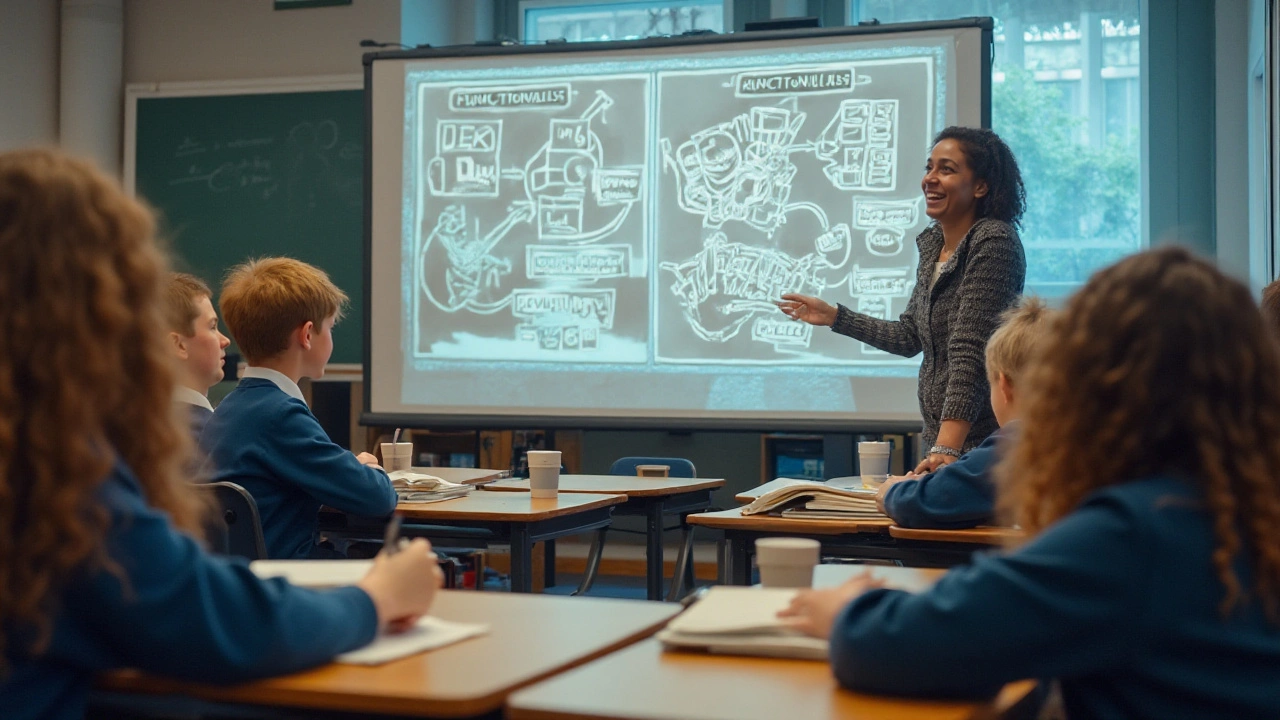Functionalism: How Form and Purpose Keep Things Working
Functionalism asks one plain question: does this thing do the job it was meant to do? Whether you’re looking at a building, a neighborhood, or a social program, functionalism focuses on usefulness, efficiency, and the way parts fit a whole. That makes it one of the most practical approaches in both design and social thinking.
Functionalism in Architecture — what to look for
In buildings, functionalism means design driven by purpose. You’ll see clear layouts, simple shapes, and materials left honest—think glass, concrete, and steel instead of heavy ornament. Look for large windows placed for daylight, open floor plans that match how people move, and structural elements that are readable rather than hidden. Classic examples include Bauhaus and modernist projects where the plan follows the use.
Want to apply this at home? Start with the layout. Prioritize how rooms will be used, then place storage and circulation to match that use. Cut redundant space: a deep entry hall that never gets used is wasted square feet. Choose fixtures and materials that are low-maintenance and fit the climate—good design should save money and time, not add hidden costs.
Functionalism in Society — simple, useful ideas
In sociology, functionalism studies how institutions keep society stable. Schools teach skills and common values. Hospitals treat illness and reduce social disruption. Families provide care and basic education. When one part fails, other parts adjust or problems appear—streets get crowded if transit can’t handle people, for example.
Use this thinking to solve local problems: map what each institution actually does, then ask what happens when it fails. If a community space is underused, check whether it meets real needs (hours, access, safety) rather than assuming design is the issue. Fix function first; style follows.
Both in buildings and in social systems, functionalism values adaptability. A good office or neighborhood isn’t rigid—it can change as needs shift. Designers and planners should favor simple structures that can be reconfigured: moveable partitions, multipurpose rooms, corridors that double as social spaces.
Quick checklist you can use now: 1) Define the primary function clearly. 2) Test movement patterns—do people move easily? 3) Reduce dead space and duplicate functions. 4) Pick durable, low-care materials. 5) Design for future change.
Functionalism won’t make every design pretty, but it will make it work. If you want visuals or case studies, check the tag’s posts on functionalism, modernism, and practical design examples to see how those ideas play out in real buildings and communities.

Functionalism Explained: How Society Works Together Like a Well-Oiled Machine
Functionalism in sociology digs deep into how parts of society work together to keep things running smoothly. Discover insights, facts, and practical examples in this lively guide.
Read more
Functionalism: Unlocking Human Behavior through Purpose and Function
Functionalism is a psychological and philosophical theory that examines how mental states are defined by their function rather than their internal composition. This article delves into functionalism's role in understanding human nature, highlighting its emphasis on the adaptive purpose behind thoughts and behaviors. By exploring how functionalism provides insights into the human experience, the article presents practical tips for applying its principles to real-world situations. Readers will gain a comprehensive understanding of how this theory remains relevant in both historical and contemporary contexts.
Read more
Functionalism and Its Rivals in Sociological Theory: A Comparative Analysis
This article provides an in-depth analysis of functionalism alongside other sociological theories. It aims to compare how each theory interprets social structures, norms, and institutions. It discusses the strengths and limitations of functionalism and juxtaposes them with conflict theory, symbolic interactionism, and feminism. The goal is to offer insights into how these perspectives contribute to understanding the complexities of social life.
Read more
Functionalism's Role and Impact on Modern Education Systems
This article delves into the concept of functionalism and how it has shaped and influenced education systems around the world. It covers the basic principles of functionalism, its historical context, key proponents, and real-world applications in modern education. The aim is to provide insightful information that can help educators, students, and policymakers understand the significant role functionalism plays in contemporary education.
Read more
The Power of Functionalism in Understanding Human Behavior
So, let's dive headfirst into the fascinating world of functionalism! Imagine it as a detective, peering into the whys and hows of our behavior. It's like a psychological magnifying glass, unravelling the purpose and impact of our actions. It's not all serious though, sometimes it's like figuring out why we can't resist those late-night snacks (guilty!). So, in a nutshell, functionalism is our Sherlock Holmes, helping us understand the mysteries of human behavior in a fun and insightful way!
Read more